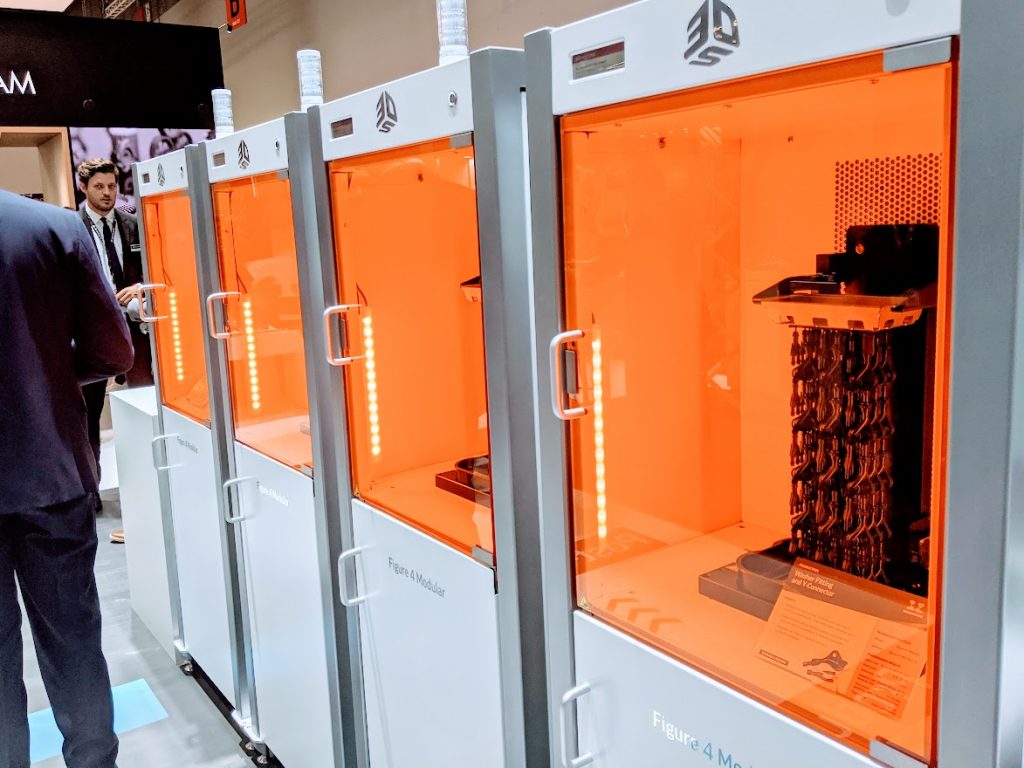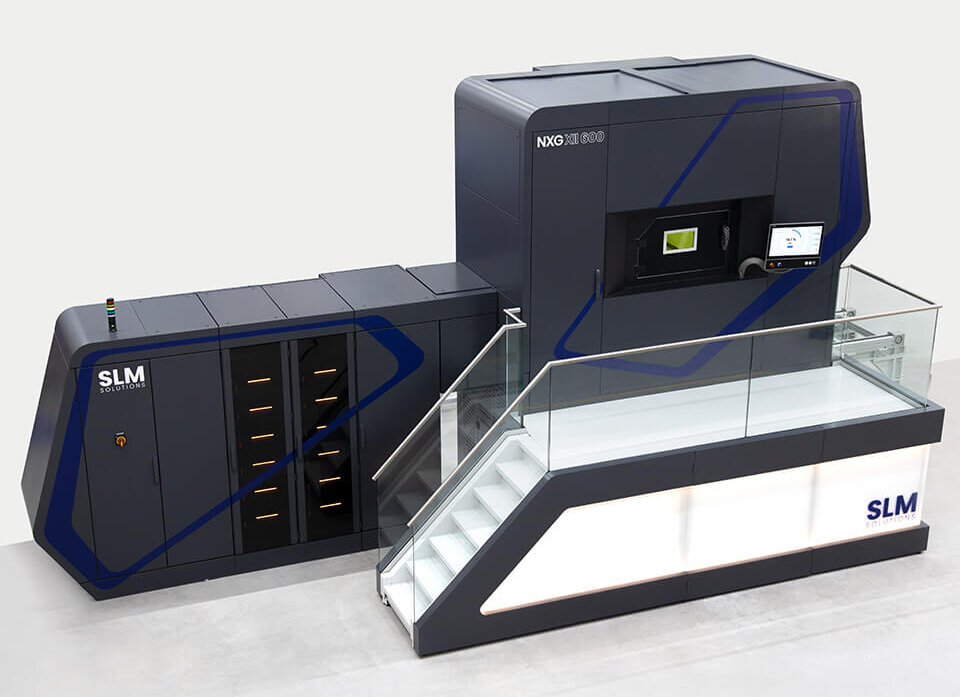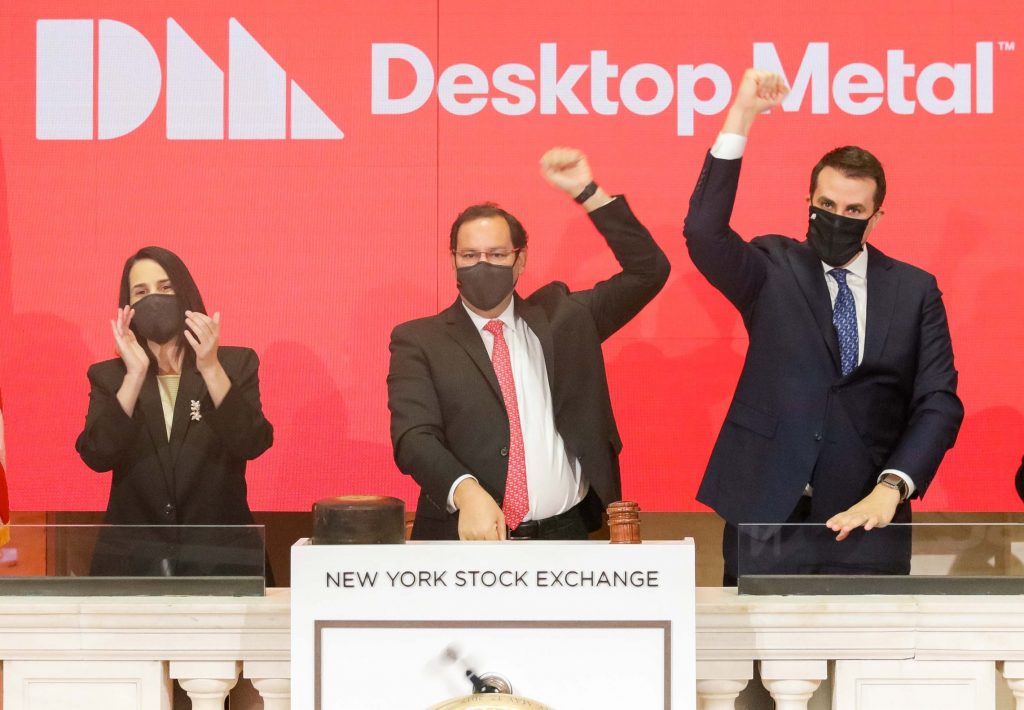We may now be over halfway through Q3 2022, but some of 3D printing’s highest revenue-generating businesses have just finished reporting their Q2 2022 financials.
As is customary, the leaders of industry heavy-hitters like SLM Solutions, Stratasys, 3D Systems, Protolabs, Materialise, voxeljet, SmileDirectClub, Desktop Metal and Markforged have therefore held earnings calls to talk through their results.
In doing so, these companies’ leadership teams have provided a unique insight into the macroeconomic and geopolitical challenges they face, and how they’re taking different approaches to tackling them. Through their varying outlooks, the firms’ CEOs and CFOs have also offered a glimpse into the future of the industry, and highlighted trends that could shape its direction in the quarters to come.

Ongoing macroeconomic instability
One of the prevailing trends reported across the industry in Q2 2022, was the continuation of headwinds posed by supply chain disruption. On SLM Solutions’ earnings call, its CFO Dirk Ackermann explained how its gross margins are being “impacted by low productivity,” an issue being driven by its “ongoing shortage of electronic components.” Ackermann added that he wasn’t expecting this to improve in H2.
Likewise, Velo3D CEO Benny Buller said his firm was finding supply chain conditions to be “particularly challenging in electronics,” and Stratasys CEO Yoav Zeif said its supply issues were “mainly in electronics” too. While none of these calls revealed the nature of parts in short supply, the problem is likely related to the global semiconductor chip shortage that continues to dog businesses across sectors.
Another issue that often raised its head was customer stockpiling. Protolabs CEO Rob Bodor said many of its clients “placed unusually large orders” in 2021 amid the uncertainty caused by the COVID-19 pandemic. This allowed the firm to achieve “record high backlogs,” but also saw its medical device demand drop year-on-year in Q2 2022, due to the unseasonably high orders it received in Q2 last year.
SmileDirectClub CEO David Katzman, meanwhile, blamed “challenges to consumer spending” and “sustained high inflation” for his firm’s 27.8% revenue dip between Q2 2021 and 2022. Inflation may not have dented client demand in quite the same way across the 3D printing sector, but it did impact many companies’ bottom lines. Citing rising material and logistic costs, Zeif and Bodor said their firms had raised prices over recent quarters, although others like Velo3D didn’t do so.
According to Buller, the reason for not raising prices was “strategic,” as he believes “the market for its products will increase, if it drops manufacturing costs for customers.” In other areas, Russia’s war on Ukraine was also cited as an issue affecting client demand. 3D Systems CEO Jeff Graves was particularly vocal about this, saying the war is “negatively impacting business confidence” in Europe.

How has the industry reacted?
Somewhat ironically for those operating in an industry that prides itself on the potential of 3D printing as an in-sourcing solution, many of its leading firms responded to macro-issues by stockpiling. Stratasys increased its US inventory spending to over $20 million in Q2 2022, while Markforged raised its inventory levels by 85.6% year-on-year and Velo3D finished with a huge inventory of $61.9 million.
As it “draws down on stock” and fulfills “staggered deliveries,” Buller said Velo3D would bring this figure down, but Zeif countered that Stratasys’ global business means it has to “make sure it has inventory in place” to “meet demand everywhere.”
Largely, these 3D printing firms have also responded to profitability challenges by cutting their spending and seeking out efficiencies. Desktop Metal laid off 12% of its staff in June and now aims to make cost savings of $100 million over the next 24 months. Elsewhere, 3D Systems and Velo3D have taken different approaches to cutting expenditure.
While the former has cut an external contract to produce a greater number of polymer parts in-house, Buller says the latter is “working with key suppliers to more closely match deliveries to our production schedules.” By doing this, the Velo3D CEO added that he anticipates the firm being able to “reduce its working capital and minimize inventory,” while continuing to “maintain short lead times.”

Identifying areas of opportunity
Despite the macroeconomic difficulties outlined above, these leading public 3D printing firms did identify several reasons for optimism across the sector. During Q2 2022, voxeljet CEO Dr. Ingo Ederer said its “best ever order inflow” was driven by demand from “automotive, aerospace and engineering, as well as art and architecture.” Having sold two SLM NXG XII 3D printers to Divergent, maker of the 3D printed Czinger 21C hypercar, SLM Solutions also saw strong automotive demand.
Materialise, on the other hand, has changed its approach to automotive, with its CEO Fried Vancraen explaining that it’s now focused less on polymer prototyping and more on “bringing its metal part turnover back to pre-COVID levels.”
Demand from aerospace clientele proved to be similarly strong during Q2 2022, with Velo3D reporting “solid bookings”, and Markforged’s key revenue driver, the FX20 3D printer, selling best in this area as well. For his part, Zeif said Stratasys also plans to “expand its penetration into applications in aerospace, automotive, healthcare and fashion,” after launching the F190CR and F370CR 3D printers in Q2.
Interestingly, Zeif added that his firm’s recent expansion into five technologies means it’s “well-positioned to grow long-term.” This sentiment was echoed by Graves, who said during 3D Systems’ earnings call that its balance sheet means it’s “well-equipped to deal with a downturn, continue investments… and pick up talent.” In keeping with this strategy, 3D Systems bought dp polar in August 2022, in a move that Graves said will allow it to better address “production-scale applications.”

Post-SPAC-IPO firms pursuing profits
Another trend that emerged in Q2 2022, was that many of the 3D printing firms which underwent mergers with Special Purpose Acquisition Companies (SPACs) over the last two years, were still chasing profitability. Desktop Metal went public on the NYSE in late-2020, and despite CEO Ric Fulop saying “achieving profitability is a key focus” for the firm, it still reported a Q2 Non-GAAP operating loss of $30.7 million.
While Velo3D’s SPAC merger happened more recently in September 2021, it too reported a $21 million operating loss in Q2 2022, and Markforged, also the subject of a SPAC IPO last year, saw its losses rise 122% to $23.8 million.
However, despite turning a loss last quarter, each of these firms has expressed confidence in their relative expansion-focused strategies. Fulop said Desktop Metal’s approach is seeing “leading blue chip companies… expand their use of 3D printing for end-use parts,” while Buller explained how Velo3D’s was “expanding its new and existing customer footprint.”
On Markforged’s earnings call, CEO Shai Terem even went so far as to say that it has “strong cost disciplines across its business,” so while “there’s opportunities for it to optimize its sales and marketing spend, it’s certainly not taking its foot off the gas.”
To stay up to date with the latest 3D printing news, don’t forget to subscribe to the 3D Printing Industry newsletter or follow us on Twitter or liking our page on Facebook.
While you’re here, why not subscribe to our Youtube channel? featuring discussion, debriefs, video shorts and webinar replays.
Are you looking for a job in the additive manufacturing industry? Visit 3D Printing Jobs for a selection of roles in the industry.
Featured image shows traders looking up at a Markforged sign outside the NYSE. Photo via Markforged.



